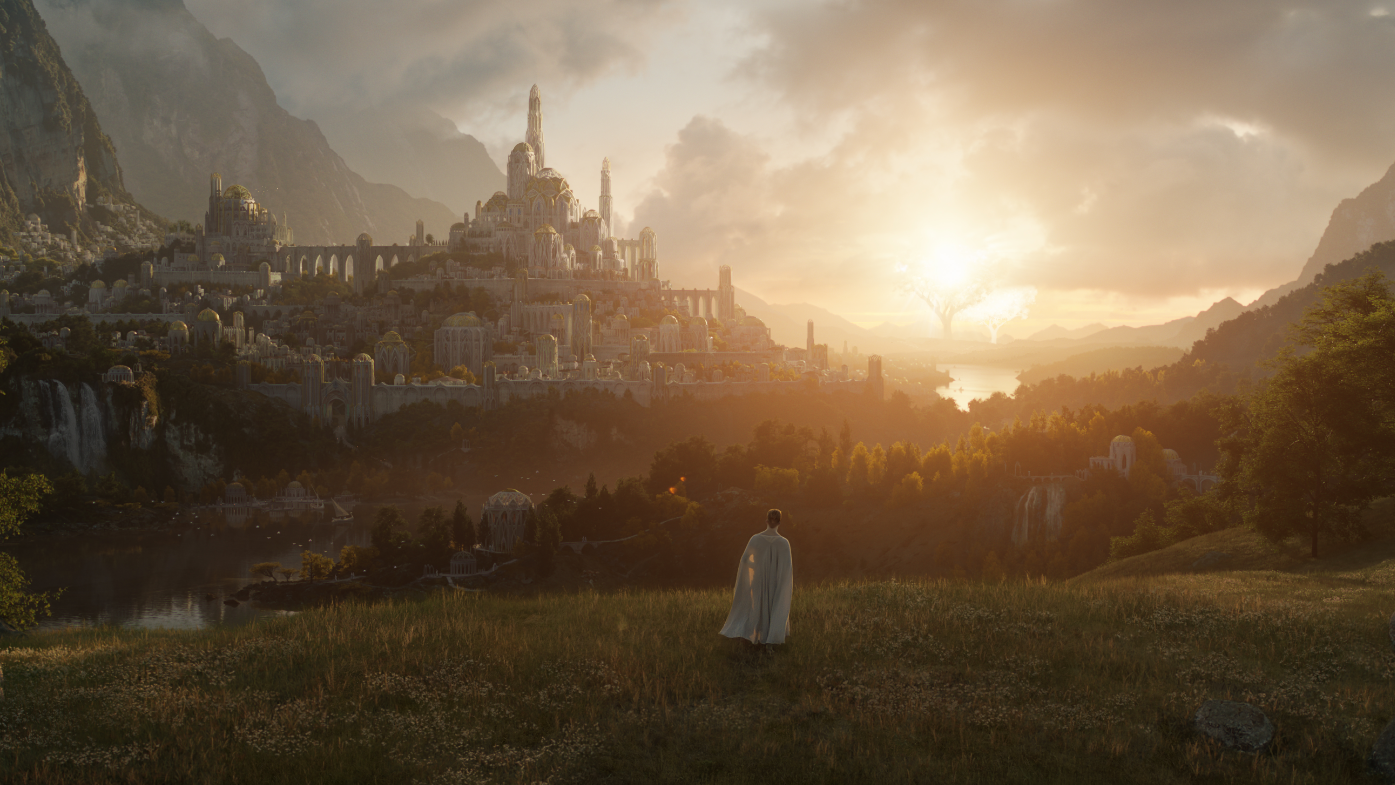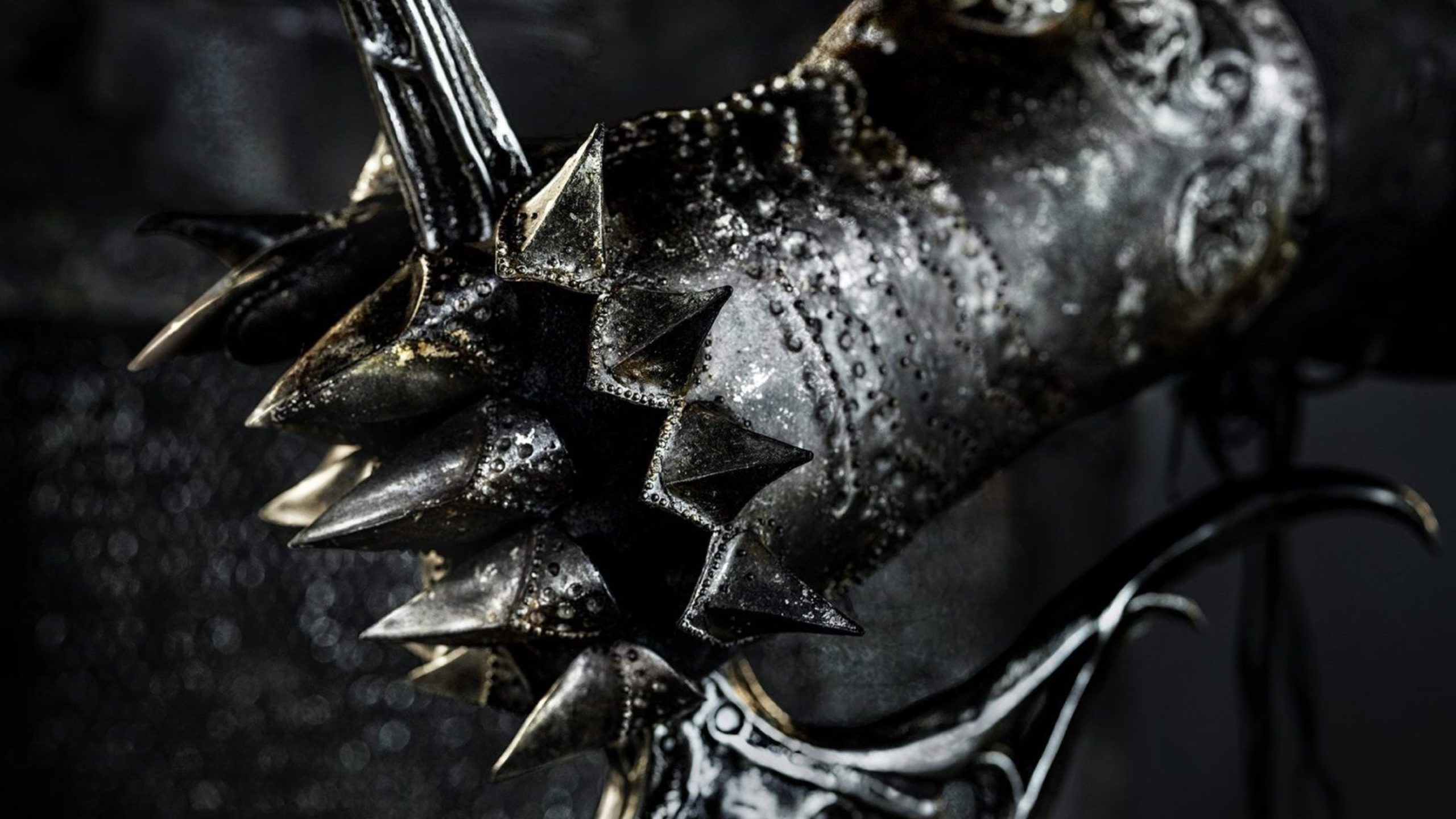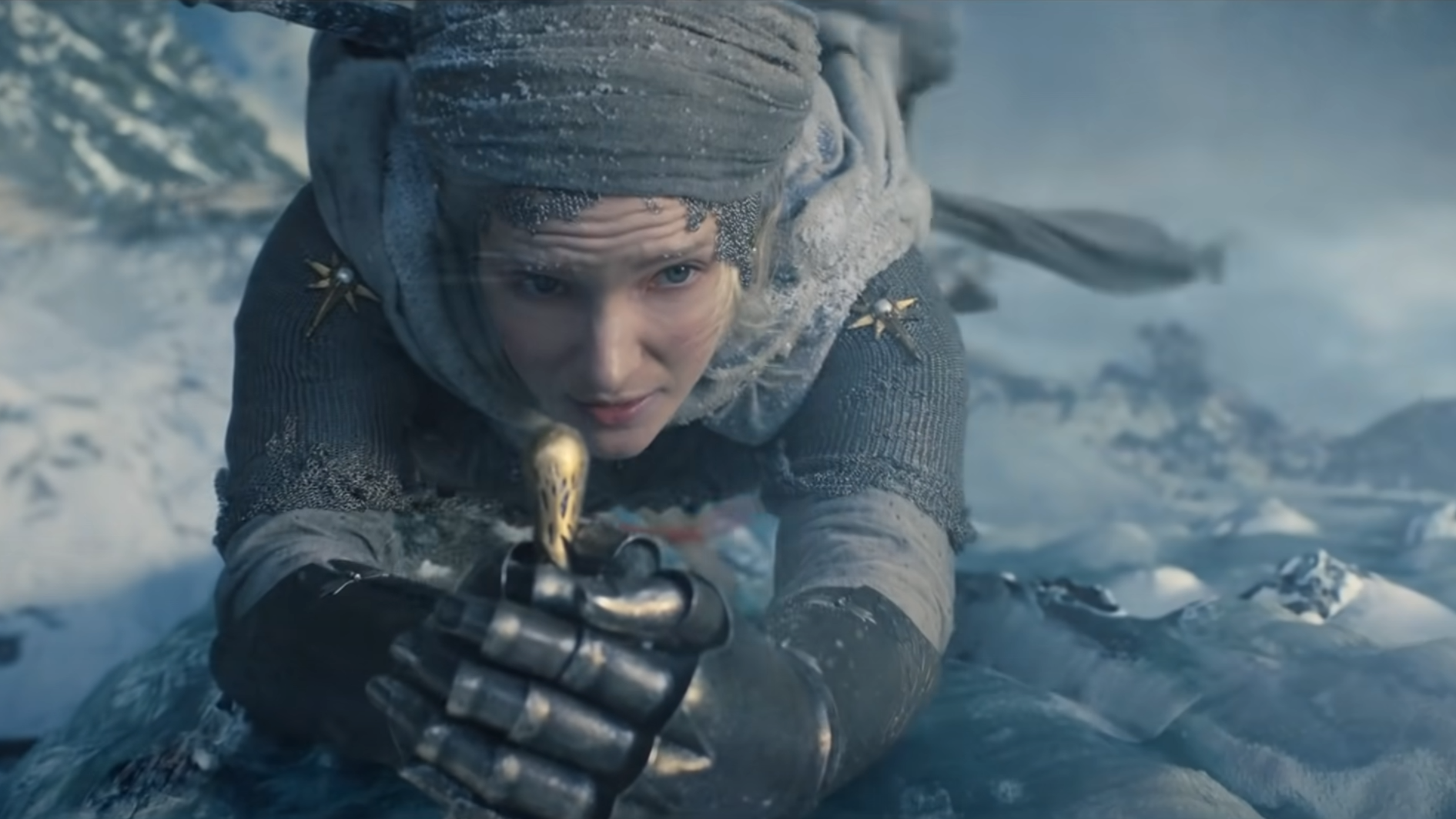Amazon’s Lord of the Rings prequel series, The Rings of Power, has already told us that it plans to dive deep into the history of Tolkien’s vast mythos. The series is primarily set thousands of years before the books and movies in the Second Age, and has already teased it will go even farther back beyond that. But what was Middle-earth like coming into the time at the start of the show? We’re here to help.
What Brought About the First Age?

As we’ve previously written about, what is known as the “First” Age in Tolkien’s chronology isn’t actually the beginning of time on Arda — the world had already existed for thousands and thousands of years. It’s named for the fact that it’s the first period of time the days were marked by a sun and moon. Previous eras of time on Arda were defined by their own major sources of light created by the powerful Valar in generations prior, first the great lamps of llluin and Ormal, and then, when they were destroyed, the trees Laurelin and Telperion, which we know will make some kind of appearance in Rings of Power.
When they were destroyed, some of Laurelin’s fruit and Telperion’s leaves were rescued, and given to the Maiar Arien and Tilion, who used them to create the actual sun and moon, respectively. Thus began the First Age of the Years of the Sun. But wait, which arsehole’s going around destroying lamps and trees like it’s nobody’s business, you ask?
The Dark Lord Rises

Lord of the Rings fans, especially movie fans, are more likely familiar with Sauron when it comes to knowing Tolkien’s Dark Lord. But Sauron wasn’t the first to claim that mantle — in fact, he was a lieutenant of the original, the primordial embodiment of evil itself: Melkor, also known as Morgoth. One of the original Ainur — the angelic first beings of god himself, Eru Ilúvatar — Melkor rebelled against his creator during the creation process of the known universe, attempting to sow his own ideas for creation into the great song Eru composed as the foundational blocks of existence. Ostracised by his fellow Ainur after the initial creation of Arda, Melkor decided to set himself against them out of spite, undermining their efforts to bring more creations to the world in the process.
So yes, it was Melkor all along. Melkor spends the thousands upon thousands of years in the pre-Age era of Arda being a massively evil thorn in the side of his fellow Ainur, destroying the great lamps Illuin and Ormal, attempting to corrupt the elves to his side in what would become the War of Power, and eventually working with the primordial spider-spirit Ungoliant to assault Laurelin and Telperion. Oh, and he stole the powerful gems known as the silmarils, which of course, you can read about in a little book called The Silmarillion — earning him the title Morgoth, which means “Black Foe of the World” in the Sindarin language.
The War of Wrath

The First Age is, in the larger context of the vast swaths of time that make up much of the defined eras of Tolkien’s work, pretty short all things considered — instead of existing across thousands of years, it’s just shy of a sprightly six hundred. Many key things happen in the First Age, such as the emergence of Men, as well as the return of the Noldor Elves to what would eventually be the region of Arda known as Middle-earth — known at this point in time as Beleriand — as they pursued Morgoth in vengeance for the destruction of Laurelin and Telperion. Morgoth, meanwhile, has consolidated vast control over much of Beleriand. Having defeated the pursuing Elves and maintaining control of the silmarils, Morgoth began having grander plans to use his hosts of orcs and other primal forces — including Balrogs and the first dragons — to destroy Elves, Men, and Dwarves alike, tightening his grip across the region.
The tide would eventually turn in the final 42 years of the First Age, with the beginning of the War of Wrath. Eärendil, a half-Elven sailor, took the treacherous voyage to Valinor to petition the Valar themselves to aid the mortal races from complete destruction at Morgoth’s hands. Although the Valar had originally been content to let the Noldor who had left Valinor to hunt Morgoth perish, they relented to Eärendil. They put together a mighty host alongside the Elves that had chosen to remain in Valinor, and set forth for Beleriand — where Morgoth amassed all of his forces to try and put a stop to his former celestial allies once and for all.
For as mighty as his own forces were, however, they were no match for the Valar’s host. Uniting with the remaining Elves as well as the three tribes of Men, known collectively as the Edain, the host smashed Morgoth’s orc armies, and even though they themselves were nearly beaten back by the arrival of the dragons, Eärendil matched them with the Great Eagles, beating back the dragons and slaying their leader Ancalagon the Black. Morgoth was captured, returned to Aman in the west, and ultimately tried by the Valar for his endless crimes… which lead to him not only being beheaded, but his body cast out into the void of space beyond Arda itself.
The Aftermath and the Dawn of the Second Age

Morgoth’s defeat came at immense cost. Arda was forever changed — the silmarils were lost forever, and much of Beleriand was completely destroyed, sunk into the seas. What remained became Middle-earth as we know it in the books and films, just a fraction of Beleriand’s remaining landmass. The Valar’s host was nearly destroyed by the arrival of the dragons, and much of the Edain were likewise wiped out in the fighting. What remained of Elfkind was ordered by the Maia Ëonwë to return to their ancestral home in the west, and many Elves chose to do so, beginning the long path of their race exiting the larger world — even if some holdout kingdoms would remain for thousands more years before journeying westwards. For their role in the War of Wrath, the surviving Edain were given the Isle of Númenor by Ëonwë, uplifting them to become a prominent force in Middle-Earth.
And, of course, some of Morgoth’s forces still lingered. Many Balrogs and dragons were slain, but the survivors went into hiding, and while much of Morgoth’s orcish hordes were wiped out, the remnants rallied around the hidden former lieutenant of the Dark Lord, Sauron, who had been in hiding during the War of Wrath following a prior defeat at the hands of the Elves. Sauron quietly amassed power and planned his ascendancy as the new Dark Lord as one Age ended and another began… much of which, no doubt, we’ll begin to see some semblance of when The Lord of the Rings: The Rings of Power begins on Prime Video September 2.
Editor’s Note: Release dates within this article are based in the U.S., but will be updated with local Australian dates as soon as we know more.
